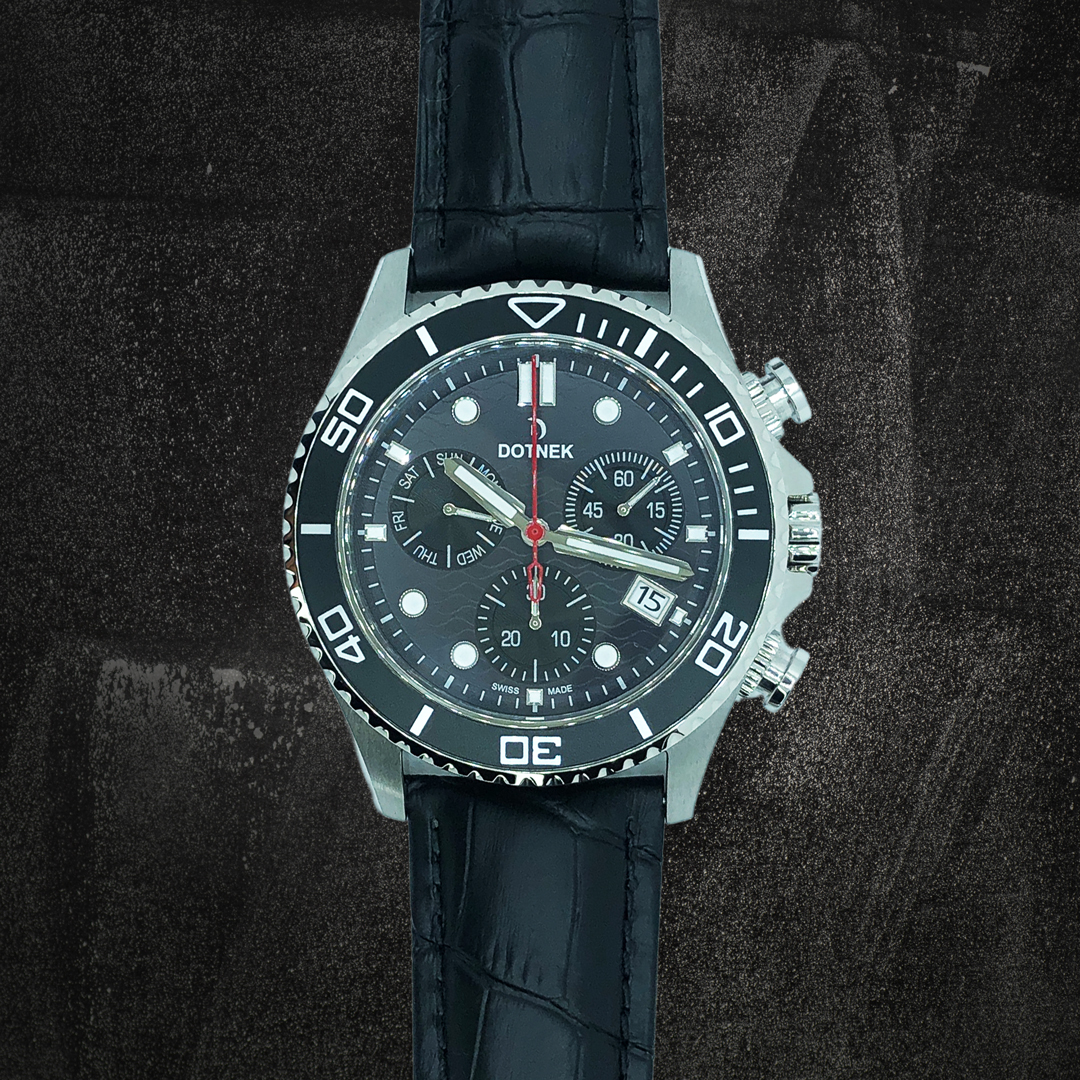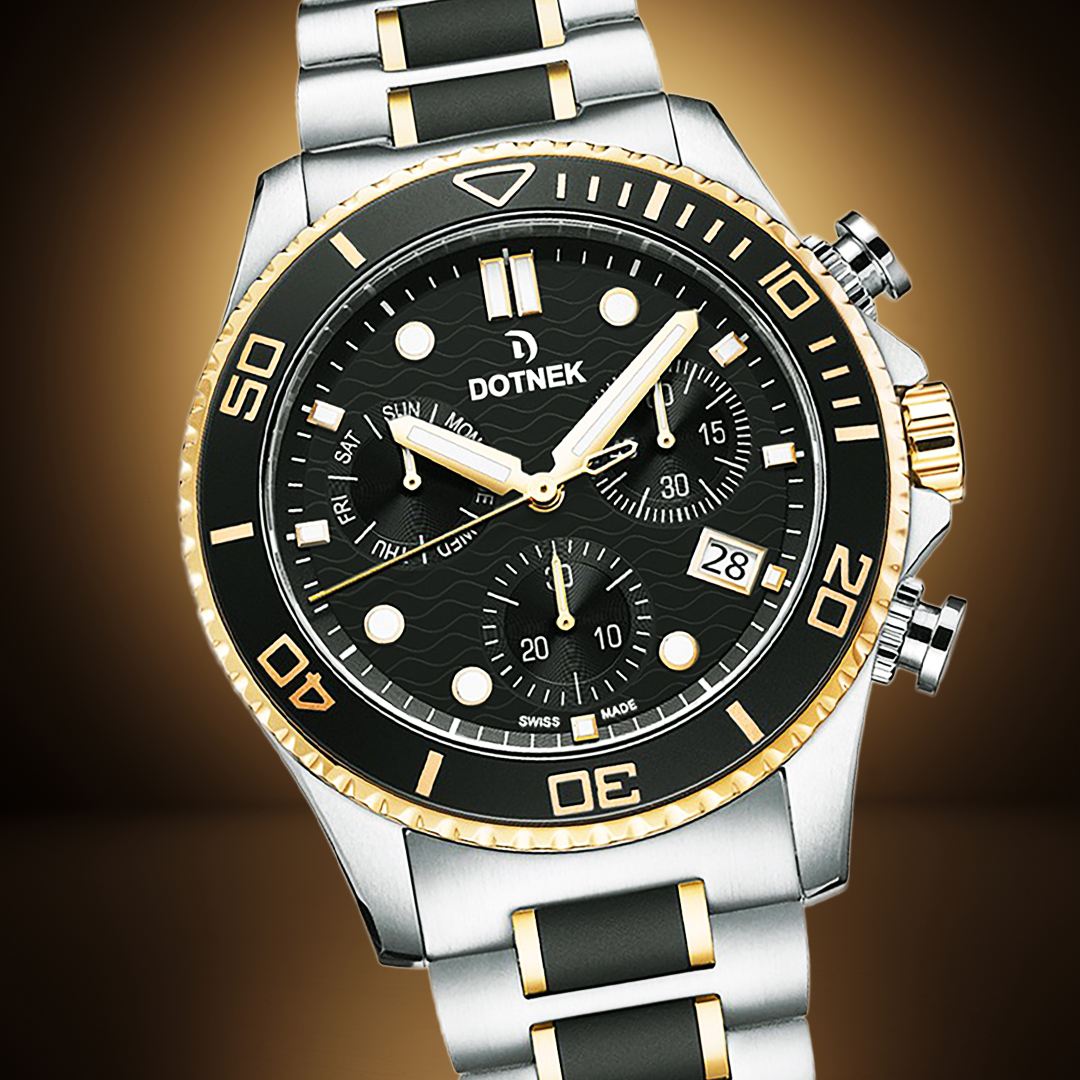What is a chronograph watch?
If you have bought a watch and the seller tells you that it is a chronograph, but you do not know exactly what it means and how it works, we can help you in this article so that you are familiar with different types of chronograph and chronometer watches.

If we want to say chronograph in the literal sense, we say that the instrument that is used to measure time intervals is called chronometer. In simpler terms, a device that is analog and can measure and determine time is called a stopwatch. Of course, it should be noted that this feature is also present in digital watches, which is also called timer. In other words, in analog clocks that are not digital, the instrument for measuring time intervals and specifying time is called a stopwatch. But in digital clocks, the tool used to measure time is also called a timer.
Today, this type of analog wristwatch is more widely used and is especially popular among people. However, it should be noted that this type of analog chronograph watch has more sports applications and is used for watches that are designed to measure the rejection time of exercise. Of course, this type of chronograph watch, which has many special hands, is attractive and popular among people.
Chronograph watches, which are used analogly and using more hands to measure time intervals, can also be used for accurate and sensitive calculations. In this case, it can be used more in sports applications where the calculation of one hundredth of a second and tenth of a second is important. Chronograph watches can calculate the times accurately and with great sensitivity by using its many hands. That is why it has sports applications.
Common types of this type of accurate and sensitive clocks, which are a suitable tool for measuring accurate time intervals and hundredths of a second, have a sensitivity of 4.1 seconds, 1/10 and 1/60. As the accuracy and sensitivity of clocks in measuring time intervals decreases, the technology used in their construction becomes more advanced and increases. In other words, because chronograph watches are analog and are used to calculate exact time intervals, they must be made manually. Because these types of watches are analog and not digital, they are made using technology and are more efficient. It can be said that they are completely opposite to digital watches and with the increase and advancement of technology used in making watches, their accuracy and sensitivity in calculating time intervals also decreases.
Chronograph watches usually have three hands that are controlled using two push buttons. If we want to adjust and tune this type of watch, we can use these two push buttons and the watch knob.
What are the parts of a chronograph watch?
- Displays one tenth of a second
- Displays one hundredth of a second
- 60 second display
- Clock display hand
- Minute display hand
- Second display hand
- Date display (day and month)
- One push button
- Double push button
- Clock tuning handle
How can we use chronograph watches?
Normally, if we want to measure time, it is better to press the push button one so that the chronograph starts moving to calculate the time intervals. If you want to stop the chronograph, which is moving to calculate the time intervals, you must press the one button again, which you previously pressed to start. One-tenths of a second and one-hundredth of a second can display small units of time that have elapsed as a tenth and a hundredth of a second. Also, the minute display, or the minute display, can show the minutes that have passed. Of course, it should be noted that after calculating the time, if you want to reset the chronograph time, you must press the second push button to clear the calculated times and you can do it again from the beginning.
It is worth noting that chronograph watches can have different functions depending on the type of engine they have. There are some chronographic clocks that, in addition to counting seconds, minutes and hours, can also count to 30 minutes and display with another hand. In this case, another hand is used to show the calculations every 60 minutes, which is one hour.
Why do I use chronograph watches?
- Accurate measurement of time intervals: In addition to showing the clock, chronograph clocks can also be used for other measurements. In this way, they can be informed about the present by using them, and they can also compare times with high accuracy and sensitivity. For example, we can say that it is used to calculate time and measurement in cooking, sports, walking, running, cycling, study exercise, and so on. With a chronograph clock, you can calculate time intervals. For example, you can calculate and measure the duration of a reading lesson using your chronograph clock.
- Readability: Chronograph watches can be easily read with a large screen and several hands, and by using them, we will have no problem in reading the clock and calculating the time.
- Internal parts and exterior design: The exterior design of chronograph watches is quite clear and stylish, which has several motors and hands. In addition to its good design, the parts used in this type of watch are the best. Because to calculate the exact times in chronograph watches, it is necessary to use several motors, hands and other tools and parts.
- Press keys: As you know, these types of watches, in addition to being used to display time to people, can also be used to accurately calculate time intervals. To start and finish accurate ground distance calculations, there are push buttons that can be used as the start and end buttons.
- Speed: There is a direct relationship between the speed of movement and the size of the oscillations per second. In this case, with increasing speed and frequency of movement, the number of fluctuations decreases. On this account, as the frequency and speed of movement of watches have increased, watches have been produced that can calculate small fluctuations in less than seconds. The typical frequency in mechanical watches is 28800 vph, which can measure one-eighth of a second. But a clock with a frequency and speed of 18000 vph can calculate up to one-fifth of a second.

What is a stopwatch?
It is worth noting that the tools that exist within the clock to calculate times are mistakenly called stopwatches. But in fact, the name of this instrument is not a chronometer, and it is called a chronograph instrument.
A stopwatch is as follows:
The stopwatch is a watch that has a very high accuracy and can even display seconds. This type of watch has been tested by COSC at different temperature conditions at different times and days. Stopwatches are unique and can be identified by a number engraved on them. Of course, these types of watches, in addition to having a unique engraved number, also have a unique certification number assigned to them by COSC.
It is important to know that watches that are called stopwatches must have a certificate from COSC to be called a stopwatch. Because stopwatch clocks are placed and tested on consecutive days at 3 different temperatures and 5 different positions. If these clocks are healthy and working well after the test, they are called chronograph clocks.
Mechanical stopwatch
These types of watches are defined using ISO and standard 3159 chronometer watches that have Spring Balance Oscillator oscillation balance. Watches whose motors are ISO and standard 3159 can have this certificate and receive the official stopwatch certificate. These types of watches are placed in different situations and temperatures for 16 consecutive days and are tested.
Quartz Chronometer
In the past, there was no standard for ISO Quartz Chronometer watches. Experiments were then performed based on ISO 3159COSC. It should be noted that the new generation quartz stopwatch is about 10 times more accurate than the old generation quartz stopwatch.
These watches are also tested in 3 different positions and temperatures for 11 consecutive days, and after passing a good test, they are issued a certificate.